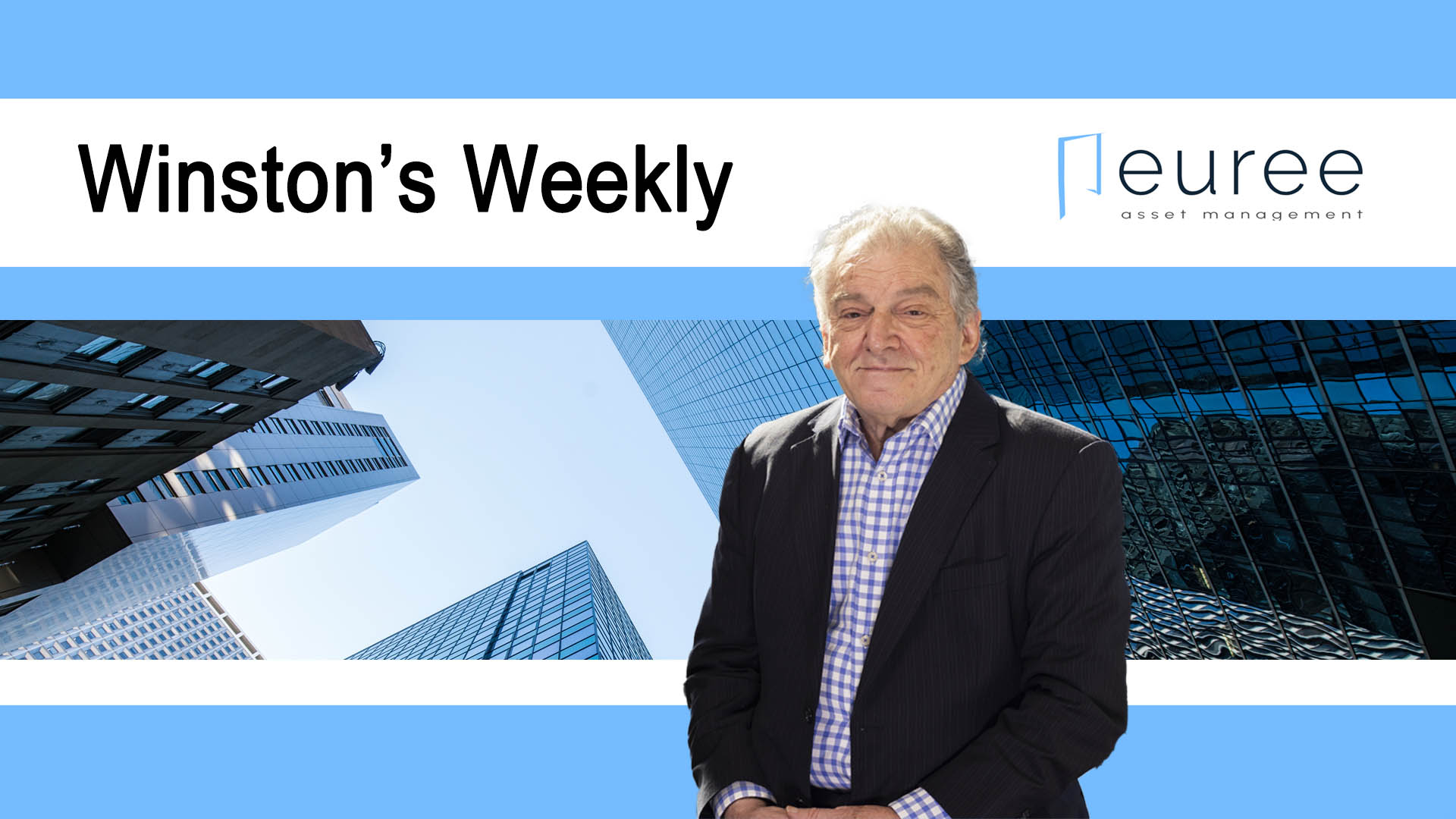Dr Shane Oliver, Head of Investment Strategy & Chief Economist at AMP, discusses developments in investment markets over the past week, economic activity trackers, major global economic events and Australian economic events.
Investment markets and key developments over the past week
Major share markets were flat to down over the last week as uncertainty returned around the timing of interest rate cuts after hawkish minutes from the Fed’s last meeting, stronger business conditions data and a smaller than expected fall in UK inflation. US shares were flat for the week though, helped by another strong result from Nvidia as the AI boom continues and a rally on Friday on lower-than-expected inflation expectations. However, Eurozone shares fell 0.6% for the week, Japanese shares fell 0.4% and Chinese shares fell 2.1%. The Australian share market fell 1.1% for the week on the back of the weak global lead, hawkish RBA minutes, a pullback in metal prices and some stock specific issues with falls being led by retail, telco, property and material shares. Bond yields reversed some of their recent decline on renewed uncertainty about rate cuts. Oil and metal prices fell, but the iron ore price rose. The $A fell as the $US rose.
The ride for shares is likely to remain volatile and constrained as valuations remain stretched, sentiment towards shares remains upbeat which is negative from a contrarian perspective, uncertainty remains regarding the outlook for interest rate cuts and geopolitical risks around the Israel/Iran conflict and US election are high. However, we continue to see further gains in shares this year as disinflation continues, central banks ultimately cut interest rates and recession is avoided or proves mild.
What is the rally in gold and metal prices telling us? Over the last week gold and metal prices have had a pull back, but it looks corrective rather than a change in trend as both gold and copper reached record highs leaving them at risk of a bout of profit taking. But what’s driven the big surge with gold up 19% on a year ago and copper up 35%? Common explanations for the surge in the gold price have focussed on: Chinese official buying to diversify its reserves away from US dollars; Chinese retail buying; and safe haven demand as a hedge against geopolitical risks. If gold was just going up on its own it may be more concerning from a geopolitical perspective. But it’s also gone up with shares over the last year suggesting that its benefitting from the broader anticipation of lower interest rates ahead which lowers the opportunity cost of holding gold and pushes it higher – and had setbacks with shares whenever expectations around rate cuts have been questioned – like into last October, in April this year and over the last week. It’s a similar story with Bitcoin. That the surge in the gold price has occurred at the same time as a surge in copper prices and metal prices generally is also consistent with the view that its being helped by the anticipation of lower interest rates. The strength in metal prices is also consistent with the nascent rebound in Chinese shares suggesting a potentially better outlook for Chinese growth ahead on the back of increasing government stimulus measures. If the pull back over the last week is just a correction and gold and metals have further to go it’s a positive sign for the $A and Australian resources shares.

Source: Macrobond, AMP
Lots of noise but global inflation is still falling – as evident in April data for Canada, Japan and the UK. This keeps major central banks (excluding the BoJ which has only just started hiking) on track for rate cuts this year albeit it’s a mixed bag as to timing. But it remains a bumpy process. The ECB and Canada look like they might start cutting rates as early as next month. But the UK may now be a laggard with the fall in its inflation rate being less than expected potentially pushing out the start of Bank of England rate cuts till later this year. In the US, the minutes from the last Fed meeting three weeks ago leant hawkish with “various participants willing to tighten further if needed and “a number” noting uncertainty regarding the degree of restrictiveness. However, this followed three hot inflation readings and so now is a bit dated with recent inflation and activity data coming in cooler. While, as Fed Vice Chair Waller indicated, “several more” months of good data are needed, our base remains for a start to Fed rate cuts in September. The Reserve Bank of New Zealand remains hawkish but a start to cuts there by year end still looks likely.

Source: Bloomberg, AMP
In Australia, the next move in rates likely remains down. The minutes from the last RBA meeting suggest that while it still retains a tightening bias, its mild and the hurdle for another hike is high requiring upwards revisions to its 2025 and 2026 inflation forecasts. While the near-term risks are probably on the upside if inflation surprises on the upside again, the most likely scenario is that the RBA holds rates ahead of rate cuts starting later this year. The recent US and Australia inflation scare after hot March quarter inflation looks to be receding, Australian economic growth is very weak with the economy going backwards were it not for massive population growth, the labour market is cooling which will result in slower wages growth ahead and Australian mortgage holders have seen far bigger rate hikes in the actual mortgage rates they pay than their counterparts in most other comparable countries. We are allowing for a 0.25% cut in the cash rate to 4.1% in November or December and two cuts next year.
Australia’s upcoming national wage decision likely to be lower than last year’s increases. The Fair Work Commission will soon deliver its decision on the annual increase in award wages which directly impacts around 21% of workers. Last year’s decision to increase the minimum wage by 8.65% and awards by 5.75% contributed around 0.7 percentage points to wages growth helping to push it above 4%yoy. While inflation still fell despite the increase – from 7.8% in 2022 to 4.1% last year – this was due to a collapse in inflation associated with the reopening from the pandemic as supply returned to normal (eg goods price inflation fell from 9.5%yoy to 3.8%yoy) offsetting the boost to costs from faster wages growth. But it likely contributed to higher than otherwise services inflation and hence higher for longer interest rates with the RBA hiking rates again after the FWC decision. This time around the increases are likely to be less. Research by Macquarie Macro Strategy suggests a rough guide is to take an average of the ACTU (for a 5% rise) and industry (for a rise just below 3%) submissions which is just below 4%. This would be reasonable – a rise around 4% would give workers a real wage rise, it’s not so high as to add to the risk of a wage price spiral, it’s in line with current wages growth and in line with the rough assessment that 4% wages growth is consistent with inflation around 2 to 3%. A complication is that the ACTU has asked for an additional 4% for female dominated sectors (like childcare and disability care) – but it’s not clear how this will be treated by the FWC as there is a separate claim for an increase in childcare wages and gender pay claims are ideally dealt with on a case by case basis.

Source: FWC, Macquarie Macro Strategy, AMP
Inflation expectations fall further in Australia. Central banks like the RBA watch inflation expectations closely because if they become entrenched at high levels after the surge in inflation in recent years it will make it even harder to get inflation back down. The good news is the Melbourne Institute’s consumer survey for May showed a further fall in consumers’ one year ahead expectations for inflation. In fact, its now around the top of the range that prevailed in the 2012-21 period and arguably consistent with the achievement of the 2 to 3% inflation target. There is a way to go yet but at least the RBA does not have to run a scorched earth policy to squeeze an inflation psychology out of the economy.

Source: Macrobond, AMP
Deep fake. Over the years I have been alerted to various fake Shane Oliver accounts on Twitter/X (which we have reported and had removed – although I suspect there may still be more). More recently I have heard of various scams in my name offering trading schemes with one involving a WhatsApp account. And this week a colleague discovered numerous fake Shane Oliver accounts on Facebook and a fake website (shane-oliver.com) with lots of my material and interviews with the site directing people to a WhatsApp account (presumably phishing). Again we have reported these but they are harder to take down. It’s part of the world we live in and imitation may be the sincerest form of flattery but I don’t post to a Facebook account having my name (so any account doing that is a fake), I don’t run my own website and I do not solicit funds or spruik trading schemes.
Great songs have a bit of magic in them. In the late 1980s/early 1990s the music production team of Stock Aiken Waterman were derided for churning out hit after hit of electro pop resulting in more than 100 top 40 hits in the UK. Success often builds contempt. DJs hated them as did record companies who couldn’t work out how they were having so much success with just a handful of people. But their songs certainly had magic in them and were catchy and bright (just what I like). Here are two of their best – Bananarama’s I Heard A Rumour and Kylie’s What Do I Have To Do?
Major global economic events and implications
May business conditions PMIs improved further in major developed countries. The composite saw falls in the UK and Australia but with improvement in Japan, Europe and the US, with the US up strongly after a fall in April. G3 input and output prices remain well down from their 2022 highs but have been rangebound for a while at relatively elevated levels.

Source: Bloomberg, AMP
Mixed US data. Apart from the strong PMIs other US data was mixed with existing and new home sales down as the back up in bond yields and mortgage rates continues to depress home lending but jobless claims remain low. Underlying capital goods orders and shipments rose slightly more than expected but this was offset by downwards revisions to the prior month and the trend in both is mildly up to flat. The University of Michigan consumer survey showed a slight rise in consumer confidence, but to still soft levels, and a fall in inflation expectations.
Eurozone PMIs improved further in May consistent with a recovery in growth from last year’s weakness.
Japanese inflation fell in April to 2.5%yoy, partly due to education subsidies in Tokyo. Core inflation fell back to 2%yoy. Inflation around the 2% target remains consistent with the BoJ continuing a gradual tightening.
Canada on track for midyear rate cuts. Canadian inflation fell as expected in April to 2.7%yoy from 2.9% with core measures falling as expected or by more. This leaves the BoC on track for rate cuts from midyear with the money market pricing in a 60% probability of a 0.25% cut in June and more than two cuts priced in for this year.

Source: Macrobond, AMP
But the start of rate cuts in the UK looks like it might be pushed out to year end. UK inflation fell again in April to 2.3%yoy from 3.2%yoy, but the fall was less than expected with services infaltion only falling to 5.9%yoy against market expecations for a fall to 5.4%yoy. The BoE still looks on track to cut rates this year but a rate cut is not now fully priced in until November. But as we know the road to lower inflation and hence lower rates will be bumpy.

Source: Macrobond, AMP
The Reserve Bank of NZ held its cash rate at 5.5%, but its commentary was more hawkish. While it revised its GDP forecasts down slightly, it revised up its inflation forecasts with concern about domestic inflation and weaker productivity growth and it revised up its cash rate projections. The money market continues to see a rate cut by year end though.
China announced its biggest property support package so far. Measures included funding for local government home buybacks for use as affordable housing; lower deposit ratios and mortgage rates; and funding for unfinsished housing. Its doubtful that the program will be enough to solve the problem – eg the affordable lending program would only cover 10 to 15% of the value of unsold homes – but it’s a big step in that direction.
Australian economic events and implications
Australian business conditions PMIs for May showed a slight deterioration, driven by services, but still remain okay.

Source: Bloomberg, AMP
Mixed messages on inflation remain. While the cost and price components in the PMI survey are down from their highs they appear to have stalled out in a relatively elevated range. This contrasts to the much weaker readings in the NAB business survey regarding prices and costs where the trend has remained down.

Source: Bloomberg, AMP
No boost to consumer confidence from the Budget. The Westpac/Melbourne Institute’s measure of consumer confidence fell slightly in May with post Budget results far weaker than pre Budget results. A survey question also highlighted that consumers plan to save a high proportion of the coming tax cuts (with Westpac estimating around 80% will be saved based on the survey). Weak confidence points to ongoing weak consumer spending.

Source: Westpac/MI, AMP
Consumer sentiment towards housing remains poor. The consumer survey also showed ongoing high expectations for home price growth but continuing depressed sentiment towards housing. Normally the two go together (see the yellow and blue lines in the next chart) but the divergence shows a potential downside risk for home prices – particularly with listings running above average levels.

Source: Westpac/MI, CoreLogic, AMP
Company insolvencies are continuing to rise. This is normally a sign of weakness in the economy, but this time around its being exaggerated by a catch up after policy support led to low insolvencies through the pandemic and insolvencies are still relatively low when expressed as a share of all companies.

Source: ASIC, AMP
What to watch over the next week?
In the US, the focus will be on inflation again with core private final consumption inflation for April due Friday and expected to slow to 0.2%mom and 2.7%yoy down from 2.8%yoy in March after three months of hotter inflation data. Growth in personal income and spending is also likely to have slowed after strength in March. Meanwhile, home price growth (Tuesday) is expected to have slowed in March and consumer confidence (also Tuesday) is likely to have fallen slightly.
Eurozone inflation data for May (Friday) is expected to have risen to 2.6%yoy from 2.4%yoy with core inflation also likely to rise to 2.8%yoy. Unemployment for April (Thursday) is likely to be unchanged at 6.5%.
Japanese data for jobs, industrial production and retail sales will be released Friday.
Chinese business conditions PMIs for May (Friday) are expected to be little changed.
In Australia, April monthly CPI inflation (Wednesday) is expected to come in at 0.4%mom not helped by a 2.2% rise in petrol prices, but this will see the annual inflation rate drop further to 3.3%yoy from 3.5% in March. An outcome around this would be consistent with the RBA leaving rates on hold again at its June meeting. In other data, expect a 0.3%mom rise in April retail sales (Tuesday) following a bigger than expected 0.4% fall in March, a 0.6%qoq rise in March quarter construction (Wednesday), a 5% rise in building approvals and a 1.2%qoq rise in March quarter business investment (both Thursday) and continued moderate growth in credit (Friday).
Outlook for investment markets
Easing inflation pressures, central banks moving to cut rates and prospects for stronger growth in 2025 should make for good investment returns this year. However, with a high risk of recession, delays to rate cuts and significant geopolitical risks, the remainder of the year is likely to be rougher and more constrained than the first three months were.
We expect the ASX 200 to return 9% this year and rise to around 7900. A recession is probably the main threat.
Bonds are likely to provide returns around running yield or a bit more, as inflation slows, and central banks cut rates.
Unlisted commercial property returns are likely to be negative again due to the lagged impact of high bond yields & working from home.
Australian home prices are likely to see more constrained gains this year as the supply shortfall remains, but still high interest rates constrain demand and unemployment rises. The delay in rate cuts and talk of rate hikes risks renewed falls in property prices as its likely to cause buyers to hold back and distressed listings to rise.
Cash and bank deposits are expected to provide returns of over 4%, reflecting the back up in interest rates.
A rising trend in the $A is likely taking it to $US0.70 over the next 12 months, due to a fall in the overvalued $US, but in the near term the risks for the $A are on the downside as the Fed delays rate cuts and given the still high risk of an escalating conflict in the Middle East.
Eurozone shares were flat on Friday, but the US S&P 500 rose 0.7% helped by lower-than-expected data for consumer inflation expectations and a rebound in tech shares. Reflecting the positive US lead ASX 200 futures rose 47 points, or 0.6%, pointing to a positive start to trade for the Australian share market on Monday.
Ends
Important note: While every care has been taken in the preparation of this document, neither National Mutual Funds Management Ltd (ABN 32 006 787 720, AFSL 234652) (NMFM), AMP Limited ABN 49 079 354 519 nor any other member of the AMP Group (AMP) makes any representations or warranties as to the accuracy or completeness of any statement in it including, without limitation, any forecasts. Past performance is not a reliable indicator of future performance. This document has been prepared for the purpose of providing general information, without taking account of any particular investor’s objectives, financial situation or needs. An investor should, before making any investment decisions, consider the appropriateness of the information in this document, and seek professional advice, having regard to the investor’s objectives, financial situation and needs. This document is solely for the use of the party to whom it is provided. This document is not intended for distribution or use in any jurisdiction where it would be contrary to applicable laws, regulations or directives and does not constitute a recommendation, offer, solicitation or invitation to invest.














